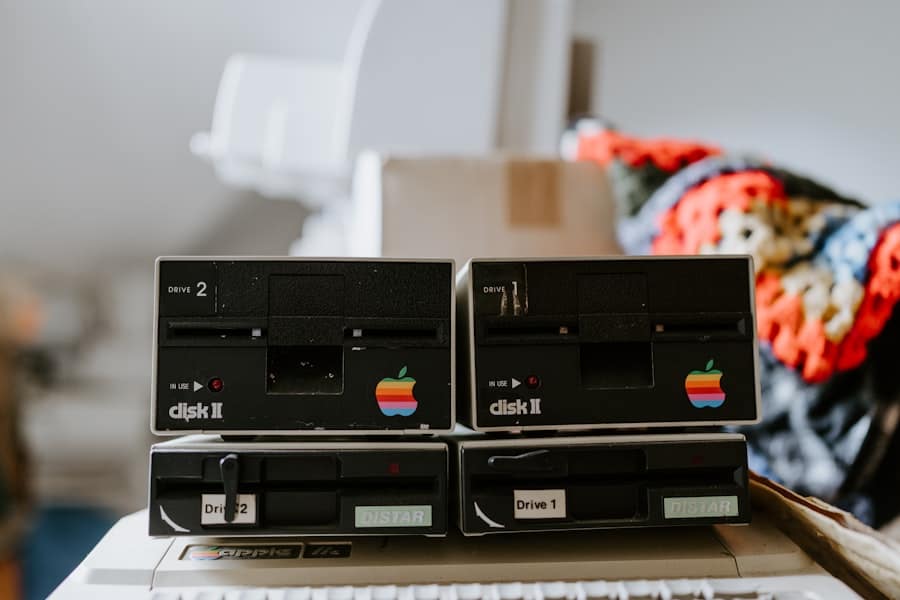Bioprinting represents a revolutionary intersection of biology and engineering, where the principles of 3D printing are applied to create living tissues and organs. This innovative technology utilizes bioinks—substances composed of living cells and biomaterials—to construct complex biological structures layer by layer.
As the global demand for organ transplants continues to rise, bioprinting emerges as a potential solution to address the critical shortage of donor organs, offering hope for patients suffering from various ailments. The origins of bioprinting can be traced back to the early 2000s when researchers began experimenting with 3D printing techniques to create simple tissue structures. Over the years, advancements in materials science, cell biology, and engineering have propelled the field forward, leading to increasingly sophisticated bioprinting methods.
Today, bioprinting is not only a promising avenue for organ replacement but also serves as a powerful tool for drug testing, disease modeling, and regenerative medicine. The ability to fabricate tissues that closely resemble human organs opens up new possibilities for personalized medicine, where treatments can be tailored to individual patients based on their unique biological makeup.
Key Takeaways
- Bioprinting is a cutting-edge technology that uses 3D printing techniques to create living tissues and organs.
- Current applications of bioprinting include creating skin, bone, cartilage, and blood vessels for transplantation and drug testing.
- Advancements in bioprinting technology include the use of bio-inks, advanced imaging techniques, and the development of vascularization methods.
- Challenges and limitations of bioprinting include the need for more complex tissue structures, ethical considerations, and regulatory hurdles.
- Ethical and regulatory considerations in bioprinting involve issues such as patient consent, intellectual property rights, and safety regulations.
Current Applications of Bioprinting in Organ and Tissue Creation
Advancements in Skin Grafting
One of the most notable applications of bioprinting is in the creation of skin grafts for burn victims and patients with chronic wounds. Researchers have successfully printed skin tissues that include multiple cell types, such as keratinocytes and fibroblasts, which are essential for skin regeneration. These bioprinted skin grafts not only promote healing but also reduce the risk of infection, offering a more effective alternative to traditional grafting techniques.
Vascularized Tissues: A Crucial Breakthrough
Another promising application of bioprinting lies in the development of vascularized tissues. The human body relies on a complex network of blood vessels to supply nutrients and oxygen to tissues while removing waste products. Bioprinting has enabled scientists to create vascular networks within printed tissues, which is crucial for their survival and functionality.
Paving the Way for Larger Organ Creation
For instance, researchers have successfully printed small-scale vascularized constructs that can support the growth of cardiac tissues. These advancements pave the way for creating larger organs, such as hearts or kidneys, that require intricate vascular systems to function properly.
Advancements in Bioprinting Technology
Recent advancements in bioprinting technology have significantly enhanced the capabilities and precision of tissue engineering. One notable development is the emergence of multi-material bioprinting, which allows for the simultaneous deposition of different bioinks. This technique enables the creation of complex tissue architectures that closely resemble natural organs.
For example, researchers have utilized multi-material printing to fabricate liver tissues that incorporate both hepatocytes and endothelial cells, resulting in improved functionality compared to single-cell type constructs. Moreover, innovations in bioprinter design have led to increased resolution and speed in the printing process. High-resolution bioprinters equipped with advanced nozzle systems can deposit bioinks with remarkable precision, allowing for the creation of intricate structures at the microscale.
Additionally, the integration of automation and artificial intelligence into bioprinting workflows has streamlined the process, reducing human error and enhancing reproducibility. These technological advancements not only improve the quality of printed tissues but also accelerate research and development timelines, bringing us closer to clinical applications.
Challenges and Limitations of Bioprinting
Despite its promising potential, bioprinting faces several challenges and limitations that must be addressed before it can be widely adopted in clinical settings. One significant hurdle is the complexity of replicating the intricate architecture and functionality of natural tissues. While researchers have made progress in creating simple tissue constructs, replicating the full range of cellular interactions and mechanical properties found in mature organs remains a daunting task.
For instance, creating a fully functional kidney with its complex filtration system poses significant challenges due to the need for precise cellular organization and vascularization. Another critical limitation is the availability and viability of suitable bioinks. The choice of materials used in bioprinting directly impacts the success of tissue engineering efforts.
Bioinks must not only support cell viability during and after printing but also provide an appropriate environment for cell growth and differentiation. Current bioinks often lack the necessary mechanical properties or biological cues required for specific tissue types. Researchers are actively exploring new biomaterials derived from natural sources or synthetic polymers to overcome these limitations, but finding optimal formulations remains an ongoing challenge.
Ethical and Regulatory Considerations in Bioprinting
As bioprinting technology advances, ethical and regulatory considerations become increasingly important. The prospect of creating human tissues and organs raises profound ethical questions regarding the definition of life, consent, and ownership of biological materials. For instance, if a patient receives a bioprinted organ derived from their own cells, who holds ownership over that organ?
Additionally, there are concerns about the potential for commodification of human tissues and the implications this may have on access to healthcare. Regulatory frameworks also need to evolve to keep pace with advancements in bioprinting technology. Currently, many countries lack comprehensive guidelines specifically addressing bioprinted products.
Regulatory agencies must establish clear criteria for evaluating the safety and efficacy of bioprinted tissues before they can be approved for clinical use.
Collaborative efforts between researchers, ethicists, and regulatory bodies are essential to navigate these complex issues and ensure responsible development in this rapidly evolving field.
Future Possibilities and Potential Impact of Bioprinting
Personalized Organs for Unique Biological Characteristics
By using a patient’s own cells as bioink, it may be possible to create organs that are not only compatible but also optimized for their unique biological characteristics. This approach could significantly reduce the risk of transplant rejection and eliminate the need for lifelong immunosuppressive therapy.
Revolutionizing Drug Testing and Development
Bioprinting could also revolutionize drug testing and development processes. Traditional methods often rely on animal models or two-dimensional cell cultures that do not accurately mimic human physiology. Bioprinted tissues can provide more relevant models for studying drug responses and disease mechanisms, leading to more effective therapies with fewer side effects.
Towards Efficient Drug Discovery
As researchers continue to refine bioprinting techniques, we may see a shift towards more efficient drug discovery processes that prioritize patient safety and efficacy. This could lead to a significant reduction in the time and cost of bringing new treatments to market, ultimately improving patient outcomes and saving lives.
Collaborations and Innovations in Bioprinting Research
The field of bioprinting thrives on collaboration among interdisciplinary teams comprising engineers, biologists, material scientists, and clinicians. These partnerships foster innovation by combining diverse expertise to tackle complex challenges associated with tissue engineering. For instance, collaborations between academic institutions and industry leaders have led to significant breakthroughs in developing advanced bioinks that better mimic natural tissue environments.
Moreover, international collaborations are playing a crucial role in accelerating research efforts in bioprinting. Global initiatives bring together researchers from different countries to share knowledge, resources, and best practices. Such collaborations have resulted in shared databases of bioink formulations, standardized testing protocols, and collective efforts to address ethical concerns surrounding bioprinting technologies.
By pooling resources and expertise, these partnerships are driving progress toward realizing the full potential of bioprinting in organ and tissue creation.
The Promising Future of Bioprinting for Organ and Tissue Creation
Bioprinting stands at the forefront of a new era in regenerative medicine, offering unprecedented opportunities for creating functional tissues and organs that could transform patient care. As technology continues to advance, we are likely to witness remarkable developments that will enhance our ability to fabricate complex biological structures with precision and efficiency. While challenges remain—ranging from technical hurdles to ethical considerations—the collaborative efforts within the scientific community are paving the way for innovative solutions.
The potential impact of bioprinting extends beyond organ transplantation; it encompasses drug development, disease modeling, and personalized medicine approaches that could revolutionize healthcare delivery. As researchers push the boundaries of what is possible through bioprinting technology, we move closer to a future where organ shortages become a relic of the past, replaced by a new paradigm where patients receive tailor-made solutions designed specifically for their needs. The journey ahead is filled with promise as we explore the uncharted territories of bioprinting’s capabilities in reshaping human health and well-being.
In a recent article discussing The Future of Bioprinting in Creating Organs and Tissues, researchers have made significant advancements in the field of 3D bioprinting. This technology has the potential to revolutionize the medical industry by providing personalized organ transplants and tissue regeneration. For more information on cutting-edge technology, check out Unlock the Power of the Galaxy with the Samsung Galaxy S21. This article explores the latest features and capabilities of the Samsung Galaxy S21, showcasing how technology continues to shape our future.
FAQs
What is bioprinting?
Bioprinting is a 3D printing technology that uses bio-inks containing living cells to create tissues and organs.
How does bioprinting work?
Bioprinting works by depositing layers of bio-ink containing living cells onto a substrate, following a digital model to create a 3D structure.
What are the potential applications of bioprinting?
Bioprinting has the potential to revolutionize the field of regenerative medicine by creating tissues and organs for transplantation, drug testing, and disease modeling.
What are the current challenges in bioprinting?
Challenges in bioprinting include ensuring cell viability, vascularization of printed tissues, and regulatory approval for clinical use.
What are the ethical considerations of bioprinting?
Ethical considerations of bioprinting include issues related to organ donation, patient consent, and the potential commodification of human tissues and organs.
What is the future of bioprinting in creating organs and tissues?
The future of bioprinting holds promise for creating personalized, functional organs and tissues for transplantation, leading to improved patient outcomes and reduced organ shortage.



